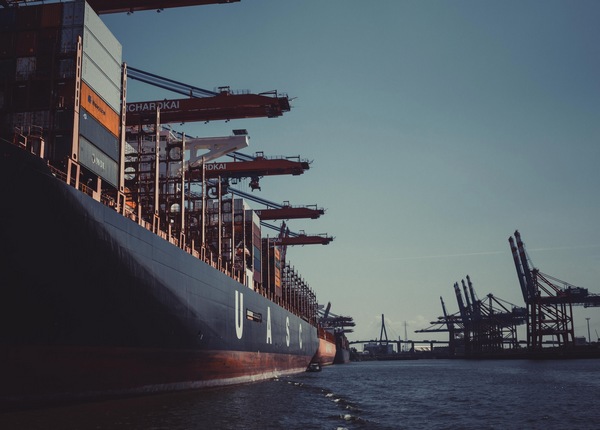
Since the beginning of 2020, President Xi Jinping has been emphasizing the need to foster a new development paradigm in which the domestic market plays the main role, and the domestic and world markets complement each other, in order to ensure sustainable development. Accordingly, the recent Central Economic Work Conference charted out the country’s economic course for 2021.
And as part of the new “dual circulation” development paradigm, the island province of Hainan is integrating the construction of its free trade port into the country’s overall development plan based on its actual conditions. The new “dual circulation” development paradigm is based on “internal circulation” (domestic economy) and aimed at integrating internal circulation with “external circulation” (global economy) to develop new advantages for China in the global market, while the Hainan free trade port is designed to promote China’s further opening-up in the new era. Despite their seemingly different emphases, the two share the same goal of sustainable development.
Further opening up domestic economy
The new development paradigm is not about pursuing closed domestic circulation. Instead, it is about synergizing the domestic and global markets. Despite emphasizing the strategic importance of boosting domestic demand, the new development paradigm does not mean China is closing the door on the outside world or abandoning foreign markets, rather it is about further opening up the Chinese economy to the outside world. And given the ever-intensifying anti-globalization sentiment in many economies, it will help the government meet the Chinese people’s growing demand for a better life.
The new development paradigm emphasizes that China deepen supply-side structural reform to strike a dynamic balance between supply and demand. And to achieve this goal, the country needs to promote higher-level opening-up by, among other things, lifting the institutional barriers that hinder the flow of factors of production to attract more global resources to China. Also, China should make more efforts to build a fair, reasonable and transparent system of global economic and trade rules, advance trade and investment liberalization, and promote greater openness, exchanges and integration of the global economy.
Incidentally, all these are also the major tasks for the Hainan free trade zone, which will act as the intersection of internal and external circulations. And given its special advantages in terms of geographical location and connectivity, Hainan is in a good position to become the meeting point of the domestic and global economy.
Middle node connecting China and Southeast Asia
Hainan is China’s southernmost province, which, from a global perspective, is the node connecting China and Southeast Asia, the two most dynamic economic regions in the world at present. A four-hour flight from Hainan can cover 21 Asia-Pacific countries and regions, which account for 47 percent of the global population and 30 percent of the world’s GDP-and an 8-hour flight can cover 59 countries and regions, comprising 67 percent of the world population and 41 percent of the global GDP.
The Hainan free trade port will adhere to high-level international trade and economic rules, and thus have special opening-up policies in terms of taxation and cross-border flow of factors of production. By making good use of these policies, the province will attract domestic and foreign goods, investments, talents, technologies and other factors of production, while facilitating their flows between the domestic and international markets. Which will make the island not only a “transit” hub but also a link between the domestic and global economies.
The signing of the Regional Comprehensive Economic Partnership agreement a few weeks ago has created new development opportunities for the Hainan free trade port and will help the province use its geographical and policy advantages. For example, the growth in trade among the RCEP member states will increase the flow of people, goods and services in the region, and Hainan is perfectly placed to act as a transit hub for them.
Policy advantages of free trade port
Hainan can use its policy advantages in tax exemption for offshore and daily consumer goods to promote consumption, expand purchase channels and attract more high-end consumer goods, which will help upgrade domestic demand.
Hainan will also use the advantages it enjoys in some other fields as well as the special free trade port policies to work out new business models with greater operational value, so as to promote innovation-driven industrial chains. And through its special policies and sales channels, the Hainan free trade port will provide Chinese consumers with more quality foreign products and services at lower prices. This will prompt more and more Chinese people who travel abroad mainly to purchase foreign products to visit Hainan instead to buy these goods and thus boost the internal circulation.
Keeping in mind the huge amount of money Chinese people traveling abroad spend, Hainan will focus on opening more offshore duty-free shops, developing medical tourism in the Lecheng pilot zone and establishing an international education center. This too will help keep the money, which the Chinese tourists otherwise would have spent abroad, within the domestic market and therefore boost the domestic economy.
Since the implementation of the offshore duty-free shopping policy, Hainan has seen rapid growth in sales. From July to November, 2.4 million shoppers spent 15.72 billion yuan ($2.68 billion) in Hainan’s duty-free shops, a year-on-year increase of 61.7 percent and 205.4 percent respectively. The growth potential is still high.
Chinese tourists spent an estimated 1 trillion yuan overseas in 2019. Assuming there is no increase in the amount in the next five years, even if Chinese travelers spend 10 percent of that amount in Hainan in the next two years to buy such products, the island will attract 100 billion yuan by 2022. Add to this the Boao Lecheng International Medical Tourism Pilot Zone’s goal of offering the Chinese people the fastest access to the most advanced medical devices and health services, and you have huge business potential.
So far, the first new drug used simultaneously by patients in China and the rest of the world has been launched in Hainan, and more than 110 medical devices available on the island have not been introduced in the rest of the country.
Hainan will also strive to address the thorny development issues through institutional integration and innovation, as well as by studying ways to establish branches of public hospitals, promoting medical reform such as separating medicine sales from medical treatment, and expediting the implementation of the free trade port policies, so as to create a model project to integrate Hainan’s development plan into the country’s new development paradigm.
The free trade port’s zero tariff policy for raw and auxiliary materials and tariff exemptions for goods with over 30 percent value added imported by the Chinese mainland will facilitate the development of Hainan’s high-tech and advanced manufacturing industries. The list of zero tariffs on raw and auxiliary materials has already been approved by the State Council, China’s Cabinet, and some related policies have been implemented.
By combining the free trade port’s special policies with its unique advantages, Hainan will focus more on the two ends of the “smile curve” to provide more competitive services. On one end, it will accelerate the development of design, seed breeding and other industries in accordance with the goals of building a global design center, as proposed in the overall plan for the free trade port. And on the other end, it will focus on expanding the shipping service industry and developing bonded warehousing, global logistics and distribution, and other business sectors.
As such, the Hainan free trade port has a bright future.(By Shen Xiaoming | source China Daily)





